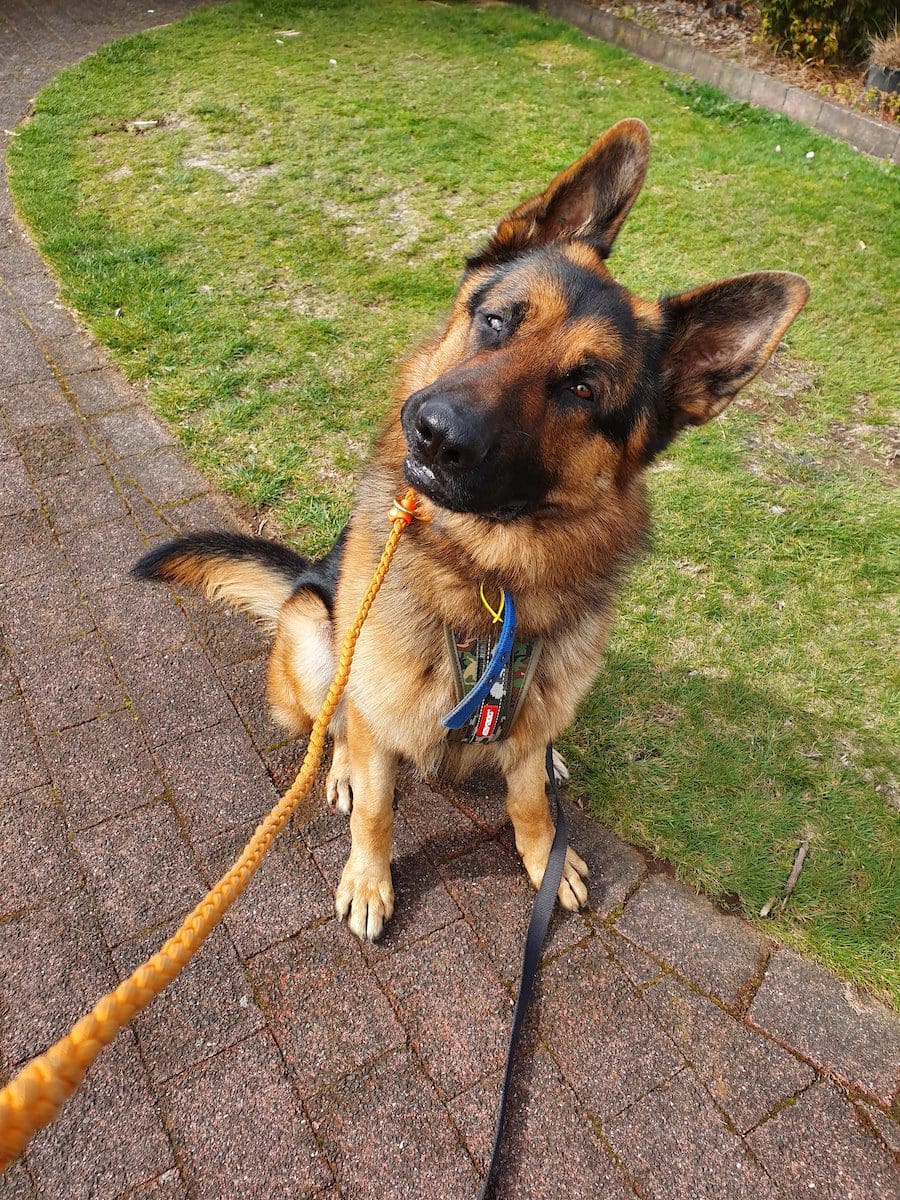The dog is one of the most popular pet animals. But people get confused about the kinds of dogs. The Alsatian and German shepherd are two different dogs in the same breed.
Key Takeaways
- Alsatian and German Shepherd refer to the same dog breed, but “Alsatian” was historically used in the UK to avoid anti-German sentiment.
- Both terms describe a breed known for intelligence, loyalty, and versatility.
- The breed has various coat colors, including black and tan, sable, and solid black.
Alsatian vs German Shepherd
Alsatian is the name of a dog breed known for intelligence, loyalty, and versatility. The name was used in the UK to avoid anti-German sentiment. German Shepherd is the original name of a dog breed and is still widely used today. It is a breed known for intelligence, loyalty, and versatility.

The British had problems with the name, so they changed the name from German Shepherd to Alsatian.
It is considered a great pet for a family. Alsatian is a highly intelligent dog.
It has double-coated skin with different colors. The German shepherd weighs up to 40 kg. The litter size of a German shepherd is four to nine.
Comparison Table
| Parameters of Comparison | Alsatian | German Shepherd |
|---|---|---|
| Definition | The Alsatian is a large breed dog for police work. | The German shepherd is a large-medium dog |
| Synonyms | Alsatian is also called a large dog. | German dog is also called German police dog |
| History | Alsatian originated in 1700. | German shepherd originated from the 19th century. |
| Word origin | Alsatian word is originated between 1685-95. | German shepherd word is originated between 1930-35. |
| Advantages | Playful and intelligent Beautiful creatures Easily kept away from poor performance. | Low maintenance Easy training Great watchdog ability |
| Disadvantages | Struggle with being left alone Difficulty early period | Routine to exercise Longline health issues |
What is Alsatian?
Alsatian has many colors with double coated. The kernel club rejected the dogs in blues, livers, albinos, and white colors. It has different heights. It is slightly long and short varieties.
They are a fast learner and adopt the training as soon as possible. They have dominant, obedient behaviour. It needs a balanced approach to the training process.
Alsatian is used as a watchdog and has a wolf-like look. It acts provincial, which creates fear in people visiting homes. It is enjoyed when the home has a large garden to play in.

What is German Shepherd?
The German shepherd is a large-medium-sized dog. It has a standard height of 60-65 cm for males and 55-60 for female dogs. The German Shepherd was called an Alsatian wolf dog until 1977.
It is also used in rescue disability assistance. In the American Kernal Club, the German shepherd is the third most registered dog. In 2016, the German Shepherd was the seventh most registered dog
in Kernal Club in the United Kingdom.
The hair German shepherds are made as a standard dog in the American Kernal Club. The short-haired German Shepherd is marked in other varieties. It is used in many films and has media exposure.

Main Differences Between Alsatian and German Shepherd
- Alsatian word is originated between 1685-95, and the German shepherd word is originated between 1930-35.
- Alsatian has the advantage of being Playful and intelligent, and German Shepherd has the advantage of low maintenance.

- https://onlinelibrary.wiley.com/doi/abs/10.1046/j.1439-0264.1999.00202.x
- https://anatomypubs.onlinelibrary.wiley.com/doi/abs/10.1002/ar.a.10052

Excelente artículo, muy bien estructurado y con datos interesantes.
El articulo esta bien escrito y tiene mucha información, me ha quedado muy claro la diferencia entre el Pastor Alemán y el Pastor Alsaciano
Asi es, los datos proporcionados son muy detallados y claros, me ha sido muy útil aprender más sobre este tema.
A pesar de que el articulo es informativo, considero que no se profundizó lo suficiente en las diferencias entre el Pastor Alsaciano y el Pastor Alemán.
Comparto tu opinión, se espera una mayor profundidad considerando la importancia de la diferencia entre ambos.
Estoy de acuerdo, la comparación es básica y no profundiza en los aspectos más importantes.
El artículo carece de un enfoque práctico sobre las ventajas y desventajas de cada raza.
En mi opinión, el artículo está muy bien redactado y proporciona una visión completa de las características de estas dos razas de perros.
Estoy de acuerdo, es un excelente análisis sobre las diferencias en la raza y su historia.
El artículo no es muy interesante, me parece que se enfoca en detalles irrelevantes.
El artículo es muy informativo sobre cómo y por qué el nombre de esta raza de perro cambió.
Estoy de acuerdo, es especialmente interesante cómo la terminología cambió debido a factores políticos y sociales.
Me pareció que el tono del artículo era muy formal, aunque comprendo que es un tema que debe tratarse con seriedad.
Estoy de acuerdo, el tono puede resultar un poco aburrido para algunos lectores.